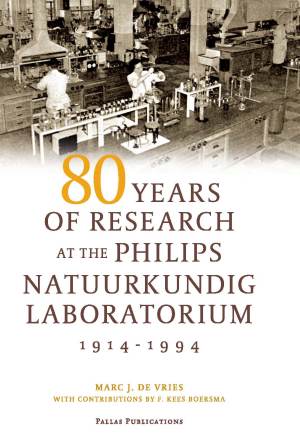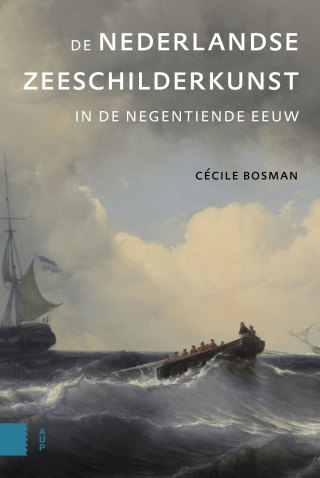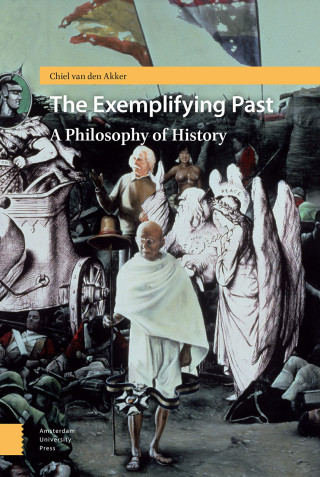
Jan Korsten, Marc de Vries
80 Years of Research at the Philips Natuurkundig Laboratorium (1914-1994)
The Role of the Nat. Lab. at Philips
Histories of major industrial research laboratories are an essential contribution to the history of technology. This book offers a description of the way one of such laboratories has changed its ambitions and activities in the course of time. In the 80-year period that is described here, the Philips Natuurkundig Laboratorium has played different roles for the Philips company – today one of the world’s largest electronics company – which was founded in 1891 in the Netherlands. The history of this laboratory is described in three main periods, each characterized by its goals, available means, organizational structures, research culture, and external relations. For each period the general story line is alternated by case study descriptions.
The Philips Natuurkundig Laboratorium was founded in 1914. The term ‘Natuurkundig’ (in English: of physics) indicated that the task of the new laboratory was to conduct research of physics. Initially this research was related to light bulbs. At that time the Philips company, led by the two Philips brothers Anton and Gerard, was primarily a light bulb producing company. Soon the Nat.Lab. (this is the commonly used abbreviation of the full name) became the main source of inventions that would support the company in extending its product portfolio. In the course of time the goal of the lab’s activities shifted in response to changes in its context, both within the Philips company and in a broader national and international context. Today the Philips Natuurkundig laboratorium is part of a worldwide research organization, Philips Research that generates options for new and improved products and processes and produces important patents in those electronics markets in which the company is active. It is still one of the world’s major private research organizations. A key characteristic is the wide range of disciplines that are represented: from electrical engineering and physics to chemistry, mathematics, mechanics, information technology and software.
The Philips Natuurkundig Laboratorium was founded in 1914. The term ‘Natuurkundig’ (in English: of physics) indicated that the task of the new laboratory was to conduct research of physics. Initially this research was related to light bulbs. At that time the Philips company, led by the two Philips brothers Anton and Gerard, was primarily a light bulb producing company. Soon the Nat.Lab. (this is the commonly used abbreviation of the full name) became the main source of inventions that would support the company in extending its product portfolio. In the course of time the goal of the lab’s activities shifted in response to changes in its context, both within the Philips company and in a broader national and international context. Today the Philips Natuurkundig laboratorium is part of a worldwide research organization, Philips Research that generates options for new and improved products and processes and produces important patents in those electronics markets in which the company is active. It is still one of the world’s major private research organizations. A key characteristic is the wide range of disciplines that are represented: from electrical engineering and physics to chemistry, mathematics, mechanics, information technology and software.
Authors
Marc de Vries
Marc J. de Vries is assistant professor of Philosophy of Technology at the Eindhoven University of Technology and affiliate professor of Reformational Philosophy at the Delft University of Technology, both in the Netherlands. From 1997 to 2000 he worked for the Stichting Historie der Techniek on the research that led to this book, which was commissioned by Philips Research.
- Title
- 80 Years of Research at the Philips Natuurkundig Laboratorium (1914-1994)
- Subtitle
- The Role of the Nat. Lab. at Philips
- Authors
- Jan Korsten
- Marc de Vries
- Price
- € 54,95 excl. VAT
- ISBN
- 9789085550518
- Format
- Paperback
- Number of pages
- 326
- Language
- English
- Publication date
- 11 - 08 - 2005
- Dimensions
- 16 x 24 cm
- Category
- Science and Technology
- Discipline
- Science, Medicine, and Technology
Table of Contents - 6
Preface - 8
1. The Role of a Research Organisation in an Industrial Company: Motives and Themes for Writing the History of the Philips Nat. Lab. - 12
2. Prologue: The Nat.Lab.’s Early Years (1914-1923) - 20
PART I. The Nat.Lab. as a Growth and Diversification Factor in the Philips Company (1923-1946) - 32
3. Developing a Research Organisation for a Diversifying Company - 34
3.1 Philips and Technological and Economic Developments in the Netherlands in the 1923-1946 Period - 34
3.2 Supporting Company Diversification as a Nat.Lab. Goal - 36
3.3 Increasing the Laboratory’s Means - 53
The Culture and Structures for the Diversifying Research Programme - 56
3.5 Influencing the Company - 65
4. Research for Diversification in Action - 74
4.1 Gas Discharges and Mercury Lamps - 75
4.2 X-ray Tubes - 84
4.3 Ferrites - 91
4.4 Holst’s Rules Reconsidered - 97
Intermezzo I. The German Occupation and the Transition Years (1940-1946) - 100
PART II. An Autonomous Lab alongside Autonomous Product Divisions (1946-1972) - 108
5. A Research Organisation alongside Autonomous Product Divisions - 110
5.1 The Economic, Social and Scientific Context in the 1950s and 1960s - 110
5.2 A New Task Profile for the Nat.Lab. - 112
5.3 Further Increase of Means - 131
5.4 Culture and Structure for a ‘Fundamental’ Research Lab in an Industrial Lab - 133
5.5 Tensions in the Relationships with PDs - 138
6. The Practice of Autonomous Research - 150
6.1 The Stirling Engine - 151
6.2 The Plumbicon - 163
6.3 LOCOS: LOCal Oxidation of Silicon - 174
6.4 The VLP - 185
6.5 Inventions and Innovations - 193
Intermezzo II. Changing Attitudes towards Science and Technology (1966-1972) - 196
PART III. The Road towards Mutual Commitment (1972-1994) - 200
7. Redirecting the Research Organisation for Mutual Commitment - 202
7.1 The Problematic Economic Climate - 202
7.2 Towards a PD-oriented Task Profile - 204
7.3 Limited Resources - 216
7.4 Changes in the Lab Culture - 227
7.5 Increasing Co-operation with PDs - 230
8. Examples of the Road towards Mutual Commitment - 242
8.1 Optical Telecommunications - 243
8.2 Integrated Digital Audio Converters - 255
8.3 Magnetic Recording Heads for Consumer Video Cassette Recorders - 266
8.4 A Knowledge Centre for the Company - 275
9. Epilogue: The Dynamics of the Nat.Lab. as a Professional Organisation within the Philips Company - 278
9.1 Changes in the Role of the Nat.Lab. - 278
9.2 The Nature of Industrial Research - 280
9.3 Comparison with other Industrial Research Laboratories - 282
List of Figures - 288
Notes - 290
Index - 322




